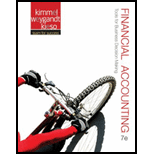
(a)
Liquidity ratio measures the short-term capacity of a company to pay its maturing obligations and to meet unanticipated requirements for cash. Liquidity ratios are
Solvency ratio
Solvency ratio measures the capacity of a company to sustain over a long period of time. Solvency ratios are debt to assets ratio, time interest earned ratio, debt to equity ratio, and more.
To Calculate: The working capital and current ratio of Company H and Company HD.
To Discuss: The relative liquidity of company H and HD.
(b)
To Compute: The debt to asset ratio and Times interest earned ratio for Company H and Company HD.
To Discuss: The relative solvency of Company H and Company HD.
(c)
To Compute: The return on assets and profit margin of Company H and Company HD.
To Discuss: The relativity profitability of Company H and Company HD.
(d)
To Discuss: The debt to assets ratio before and after lease obligations of Company HD.
To Discuss: The implications of operating lease obligations.
Want to see the full answer?
Check out a sample textbook solution
Chapter 10 Solutions
Financial Accounting
- Required Determine whether the following items included in Wong Company’s January Year 1 bank reconciliation will require adjusting or correcting entries on Wong’s books. When an entry is required, record it in general journal format. Note: If no entry is required for a transaction or event, select "No journal entry required" in the first account field. Service charges of $50 for the month of January were listed on the bank statement. The bank charged a $250 check drawn on Wing Restaurant to Wong’s account. The check was included in Wong’s bank statement. A check of $62 was returned to the bank because of insufficient funds and was noted on the bank statement. Wong received the check from a customer and thought it was good when it was deposited into the account. A $990 deposit was recorded by the bank as $980. Four checks totaling $810 written during the month of January were not included with the January bank statement. A $75 check written to OfficeMax for office supplies was…arrow_forwardTotal assets at the year end?arrow_forwardPlease give me true answer this financial accounting questionarrow_forward
- critically analyze the effectiveness of the tax system in Jamaica with a brief history of the tax system highlight the different types of taxes used in the country and identify and discuss 4 problems with the Jamaican tax system.arrow_forwardSolve my problemarrow_forwardSolution of all problemsarrow_forward
- Jones Manufacturing Co. Ltd. makes a product by way of three consecutive processes. Inspection takes place during the processing operation, at which point bad units are separated from good units and sold as scrap at $20 each. Normal losses are estimated to be 5% of input during the period. The following data relates to process 2 for the month of October. During October, 20,000 units valued at $400,000 were transferred from process 1 to process 2. Other costs incurred during the month were: Direct material added Direct labour Production overheads $272,000 $254,000 $ 120,400 At inspection, 3000 units were rejected as scrap. These units had reached the following degree of completion: Transfer from process 1 Direct material added Conversion costs 100% 80% 50% Work-in-progress at the end of October was 4,000 units and had reached the following degree of completion: Transfer from process 1 Direct material added 100% 60% 40% Conversion costs There were no unfinished goods in process 2 at the…arrow_forwardIf you answered with incorrect data then will give unhelpful. If image is not clear commentarrow_forwardWhat is the total stockholders equity on these financial accounting question?arrow_forward
 Managerial Accounting: The Cornerstone of Busines...AccountingISBN:9781337115773Author:Maryanne M. Mowen, Don R. Hansen, Dan L. HeitgerPublisher:Cengage Learning
Managerial Accounting: The Cornerstone of Busines...AccountingISBN:9781337115773Author:Maryanne M. Mowen, Don R. Hansen, Dan L. HeitgerPublisher:Cengage Learning Financial Accounting: The Impact on Decision Make...AccountingISBN:9781305654174Author:Gary A. Porter, Curtis L. NortonPublisher:Cengage Learning
Financial Accounting: The Impact on Decision Make...AccountingISBN:9781305654174Author:Gary A. Porter, Curtis L. NortonPublisher:Cengage Learning Financial AccountingAccountingISBN:9781337272124Author:Carl Warren, James M. Reeve, Jonathan DuchacPublisher:Cengage LearningPrinciples of Accounting Volume 1AccountingISBN:9781947172685Author:OpenStaxPublisher:OpenStax College
Financial AccountingAccountingISBN:9781337272124Author:Carl Warren, James M. Reeve, Jonathan DuchacPublisher:Cengage LearningPrinciples of Accounting Volume 1AccountingISBN:9781947172685Author:OpenStaxPublisher:OpenStax College Financial AccountingAccountingISBN:9781305088436Author:Carl Warren, Jim Reeve, Jonathan DuchacPublisher:Cengage Learning
Financial AccountingAccountingISBN:9781305088436Author:Carl Warren, Jim Reeve, Jonathan DuchacPublisher:Cengage Learning





